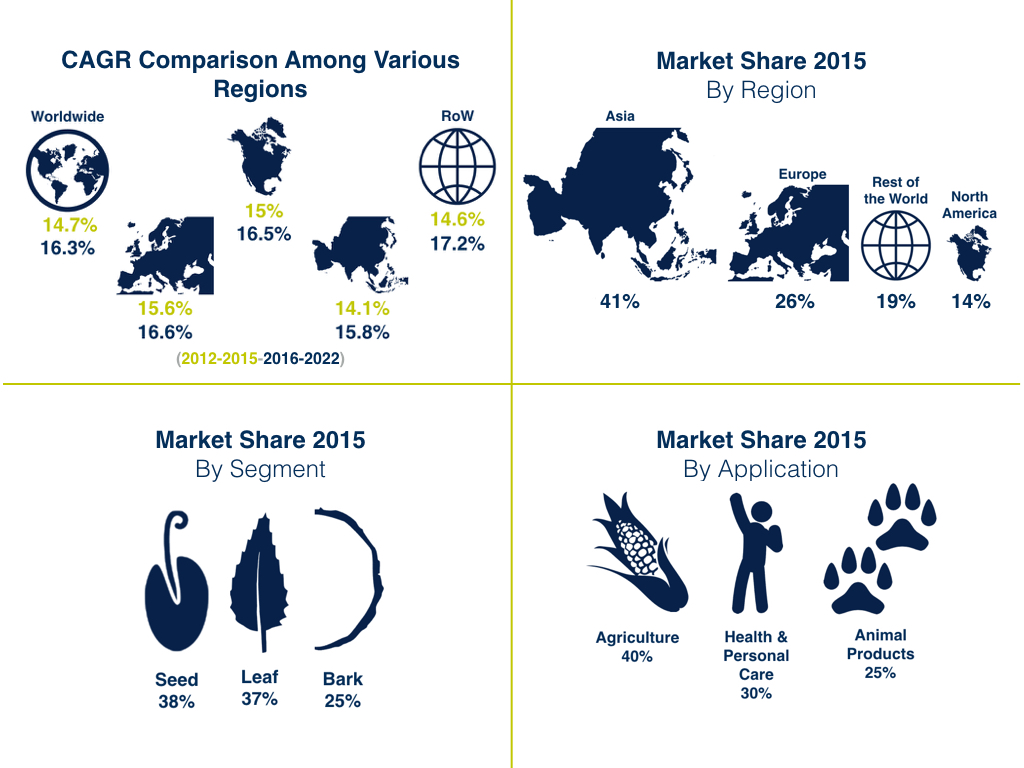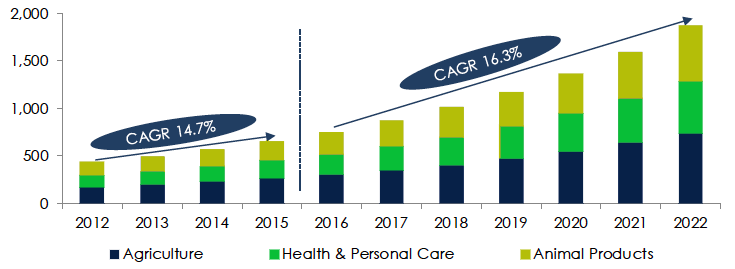Agriculture has reached a crossroads. In order to survive and thrive in this new millennium we need to revolutionize our production methods to ensure a secure, accessible and long-lasting food supply for everyone.
Feeding the world in a safe and sustainable manner is a considerable challenge, especially with a rising global population, significant arable land degradation and crop yields starting to show a decline. The primary obstacles to sustainable food security today are the combination of these factors combined with an economic model and thought system, nurtured throughout the industrial revolution, that views social progress as the ability to produce at maximum capacity and at any financial or environmental cost. This attitude that is often shared towards life, business and especially agriculture is on the verge of profound change.
Biopesticides, a natural solution for comprehensive crop protection, will set the foundation for this necessary transformation in global agriculture. Increasingly popular for consumers, highly profitable for producers and extremely beneficial to our health and the environment, organic crop care is one of the innovations agriculture so desperately needs. As a result, the global market for agricultural biologicals such as bio-pesticides and bio-fertilizers have shown impressive growth and momentum in recent years. The global bio-pesticide market reached $3 billion in 2015, and will account for 5% of the global crop protection industry. Forecasts place the bio-pesticide market value at $6.6 billion in 2020, with a compound annual growth rate (CAGR) of 15%. The global bio-fertilizer market size was estimated at $538 million in 2014 and is expected to reach $1.8 billion by 2020 at a CAGR of 14%. By comparison, the growth of the synthetic agrochemical market has waned over the past few years. By 2050, the bio-pesticide market is expected to equalize with its synthetic counterpart in terms of market share.
Neem, one of nature’s most effective pesticides and fertilizers, provides a simple to prepare, inexpensive and nontoxic alternative to a number of synthetic agrochemicals. Considered by the United Nations as the Tree of the 21st Century, while listed in the top ten plants to be studied for the sustainable development of the human race by the US National Research Council, the tree will continue to make substantial contributions to this new agricultural system in development.
Neem – A Market Snapshot

Source: P&S Research (2016)
The awareness of neem around the world is growing alongside a greater interest in organic products across the board. Utilized globally for crop protection, the market for neem is expected to grow from $653 million in 2015 to $1.8 billion in 2022 at a compound annual growth rate of 16.3%. Neem is an import-led market, mostly dependent on exports from Asia and Latin America. Highly fragmented, with several small-size players who do not have a fixed channel for international sales on a large scale, there is great opportunity to gain a leading market share. Here at Unique we strive to fill this gap in the market and develop the largest, most efficient and environmentally friendly neem plantations in the region.
Neem’s Star Application – Agriculture
Source: P&S Research (2016)
Increasing food pressure, aggressive climate change and dangerous levels of pollution are all compounding reasons to evolve strategies for sustainable living. The neem tree is one legitimate response to several of the challenges that have so far characterized the 21st Century. Given the scale, scope and complexity of the world’s entire food system, one of the most important strategies is to first build a socially and environmentally responsible production chain in agriculture through the use of natural alternatives such as neem in crop protection.
